6 Artists Respond to How Health Challenges Changed Their Choice of Medium
Exploring how tweaking a medium can allow for creativity in the face of challenges that were stifling it
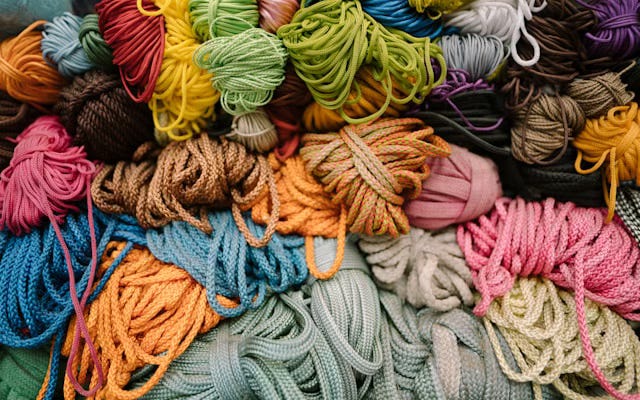
I spent nearly a decade interviewing people about the mental and physical health benefits they experienced from crochet. Over time, I expanded out beyond crochet to other yarn crafts, other crafts, and ultimately all art forms. And over time, I came to get curious about the times when art doesn’t heal or the times when that healing is complicated. I came to notice the “shadow side”.
So, I’ve been looking back at my archive of interviews with people that had been focused on the benefits of creating with an eye towards the lies and points that indicate times of challenge, seeing what we can learn. Here are six examples of lines that people shared in their interviews that suggest that their choice of medium is sometimes directly related to their health challenges. The first five come from my interviews for a magazine column called Crochet Heals and the sixth was the interview with Bunni I shared here earlier this year.
Because this shadow side wasn’t the point of those early interviews, these are just snippets of insight I’m finding now, creating threads I’d like to follow further. In some cases, I’ll be able to follow up with the artists, which I’m looking forward to doing in due time. I think there’s a lot of potential power in figuring out the adaptations that we make to continue creating art in the face of challenges.
Jane on The Medium of Crochet During Recovery
Several years ago I had to have a heart surgery, after which I became very ill. The illness permanently damaged my vision, balance and memory centers. In the time before I was diagnosed, I began to experience serious anxiety and fear as well as depression.
My wife encouraged me to try to find a hobby. I had previously tried knitting but I hated it. I kept dropping stitches and making other mistakes, so I was frustrated by knitting, plus I developed tendonitis in my elbow from it. I gave up on yarn crafts for the time being and turned to making jewelry.
However, during this period of illness / recovery, I decided to give crochet a chance again. I quickly learned that crochet calmed me and lifted my mood. I am one of those people that have both serious physical illness and mental illness. It’s hard to find something to do that helps one as well as the other. Crochet has uniquely been able to do this for me.
When I think about my life before crochet I remember a very sad and lonely person. I actually have not had a major depressive episode since I started to crochet.
So, in this example, crochet was not on the artist’s radar, but then it became an idea as something that was possible during the challenges of recovery, and it ended up becoming a healing art form. This is one of the key benefits of crochet that people have frequently expressed to me in my research - its portability, its small scale, its soft materials, the ease with which you can pick it up and put it down … these all lend themselves to working with it even when facing many physical and mental health challenges.
So, when I first did my research, I was focused on “how does crochet help?” And now I want to twist that angle a little bit and ask, “what was going on and why was crochet the medium that solved that?” What was going on was that physically certain art forms didn't feel possible for Jane, including knitting, but when she found the right medium, she could create.
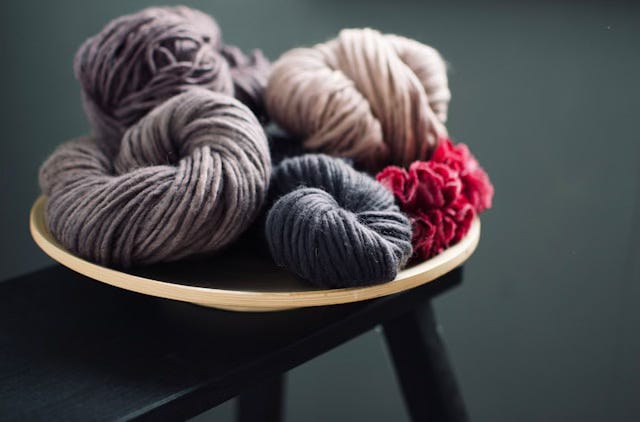
Sam on First Learning to Crochet
I can remember getting frustrated with it for a while, putting it down and coming back to it again and again. I think that was the key. I didn't have to put all my energy into it and if it got too much, I could just put it down and rest for a while. Crochet is something that is easy to set down and resume later.
This reiterates that point that when you’re facing challenges, you sometimes need a medium that’s going to be easy to pick up. This could be that you return to a medium you’re already very familiar with. Or it could be that you find a new medium that has a learning curve that works for you.
Janferie on the Motivation to Get Out and Get Supplies
We went through the tragic loss of our baby at 24 weeks gestation. About a month after it happened, I was clearing some baby things out of a cupboard. I happened to come upon my childhood crochet bag. Inside was that half-completed granny square blanket that I’d started as a child. The yarn and a few crochet hooks were in there as well. I took it out and looked at it with my older son, then 2 1/2 years old. He instantly LOVED it and begged me to finish it. I needed to make it bigger for him. I realized that there wasn’t enough of the original yarn left to do so, which meant I needed to try to match the colors somehow. I tried to do it online but it proved impossible to tell if it was the right match without seeing the yarn in person. So, I needed to go find a yarn shop. This doesn’t sound like a big deal. However, at the time, I was suffering with crippling anxiety. I genuinely believed that I would never be able to go out again on my own. So, this was actually a HUGE deal, but I really wanted to get that yarn and finish that crochet blanket. It was the first time that I had wanted to do anything at all since the loss of the baby. The motivational power was immense, and it proved to be the start of my passage out of the darkness again. I got help to go look for the yarn at first. However, on my third trip to go get yarn, I did it on my own! On the 30th of December 2010, just a couple of weeks after finding my wee crochet bag, I made that trip all by myself. I smiled, for the joy I felt was so real, albeit only fleeting. It was there and showed me that I was going to be okay.
In this case, it was the joy of finding the right yarn that motivated Janferie to take action and move beyond the symptoms challenging her so that she could get out of the house and back to creating. Which makes me wonder - if you’re having challenges with anxiety, depression, etc. - does it sometimes help to find a medium that you’re really excited about going out to look for supplies for?

Akua on Crocheting During Paralysis
On November 4, 2005, just a few minutes after 3 in the morning, I became paralyzed. It was sudden and cataclysmic. I was later diagnosed with idiopathic transverse myelitis. The condition leaves me unable to walk, unable to move my legs and in constant pain. After that day in 2005, I had to spend months in the hospital and then in a nursing home.
During that time, crochet was my greatest comfort. I had already been very involved in and committed to several other art forms, but I was unable to access those due to the paralysis. Crocheting enabled me to continue to create. My physical limitations had no impact on my crocheting.
My involvement and production with crochet blossomed during that time. I explored different forms of crochet, I began to design and I even began selling my creations online.
Like with Jane, this is an example of how an artist wasn’t able to use art mediums that previously were accessible to her but then found a medium, in crochet, that allowed her to create in new ways.
Nicole on Repetition in Craft
I started selling my handmade creations, which made me feel ecstatic. But to produce the same item again and again became boring for me very quickly. I felt more like a machine than a person who was challenged. I was losing the fun of crocheting. I found my solution shortly after: I needed to become a crochet pattern designer. I had always created my own patterns, but it never crossed my mind to actually be able to earn money from it. Doing so, I was able to find something exciting where I can take others with me on a journey.
In this case, the medium has shifted from the physical act of crocheting over and over again to the act of designing crochet patterns. the shift is subtle but important. Nicole still spends her time physically crocheting, testing out ideas, but that’s only a portion of the creative process. Writing up patterns, taking photographs, creating ideas around the item all become a part of the creative process, allowing her to feel excited about the work again.
What tweaks like this might we find for ourselves when our own creative activities become repetitive in a way that bores us? Or when our own mental health - such as the numbness of depression - makes creativity feel rote and dull?
Bunni on Choosing Colored Pencils
I am a traditional artist that focuses mainly on realism in colored pencil. The relation most visibly for me comes from a desire to have unfaltering control over something that I want. With colored pencils, I fully control the piece instead of running the risk of something being slightly off in terms of color, as might be the case in other mediums that I’m less familiar with.
In this case, what Bunni needs is a sense of control. There are many ways to achieve that in our creativity from routines to the design of our spaces. She has chosen to keep working with the same medium, colored pencils, because the familiarity she has with the medium gives her that sense of control. Within the parameters of feeling in control, she’s able to then explore her creativity. Without that sense of control, she might find herself too overwhelmed to explore that way.
If you read this far, perhaps you liked the work. The work does take work. It only continues with support, so please consider subscribing. My annual rate starts at $10 per year.





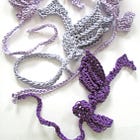
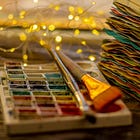

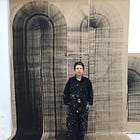
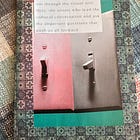
I'm experimenting with my coloured pencils and my brush markers. Having so much fun now that I realize I can just play and not worry about anything being 'perfect' or 'right' because it's art! I can just play and have fun.
I suffer from severe arthritis and have had four spinal fusions and a knee replacement in the past few years. I also have an adult son who is autistic. The challenges to create have become pretty overwhelming. What used to bring me so much joy and relaxation now often causes sadness. I used to work in colored pencil and pastels . I also would upcycle and refinish old pieces of furniture or objects that just needed some extra love. I worked for years with my tiny scissors doing decoupage to add to my pieces. It’s practically impossible now to use scissors to cut the fine designs or hold a pencil for any length of time without completely crippling my hands. So, I now use watercolors to create paintings and illustrations. My husband made a special bed/recliner desk for me to work. Sitting for any length of time at my art table in my studio can be quite painful and then add the anxiety of having to leave my work. Now thanks to my homemade bed desk modification and working in watercolor I can now let that love of creating back in my life. The ease of the loose grip on the paint brush and the beautiful act of combining pigment with watercolor and gliding over the paper has put a smile back on my face. I have to live with pain every day but if I can continue my art journey ..well that’s the best medicine for my heart and soul. Sorry this is so long!!!